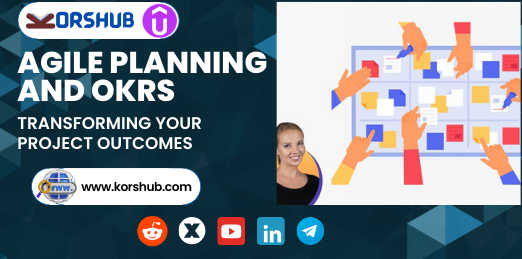In today's rapidly evolving business landscape, where agility and adaptability are paramount, traditional project planning methods often fall short of delivering desired outcomes. Agile Planning and Objectives and Key Results (OKRs) have emerged as transformative frameworks that can revolutionize project management and goal-setting, fostering innovation and efficiency. Let's delve into how Agile Planning and OKRs can elevate your project outcomes and drive success.
Introduction to Agile Planning and OKRs
What is Agile Planning?
Agile Planning is a methodology that emphasizes flexibility, collaboration, and responsiveness to change in project management. It advocates breaking down projects into smaller, manageable tasks or iterations, enabling teams to respond quickly to customer feedback and evolving requirements.
Understanding Objectives and Key Results (OKRs)
OKRs are a goal-setting framework used to define and track objectives and their outcomes within an organization. Objectives are ambitious, qualitative goals, while Key Results are specific, measurable milestones that indicate progress toward those objectives.
Benefits of Combining Agile Planning with OKRs
By integrating Agile Planning with OKRs, organizations can experience several key advantages:
- Enhanced adaptability and flexibility: Agile methodologies allow teams to adapt to changing priorities and market conditions swiftly.
- Improved alignment and focus: OKRs provide clarity and direction, ensuring that everyone is working towards common goals.
Implementing Agile Planning and OKRs
Successful implementation of Agile Planning and OKRs involves:
Setting Clear Objectives
Identifying clear and ambitious objectives that align with the organization's strategic priorities.
Defining Key Results
Establishing measurable outcomes that define success for each objective.
Iterative Planning and Execution
Breaking down work into smaller iterations or sprints, allowing for continuous improvement and adjustment based on feedback.
Best Practices for Agile Planning and OKRs
To maximize the benefits of Agile Planning and OKRs, organizations should consider:
- Cross-functional collaboration: Encouraging collaboration across different teams and departments fosters innovation and problem-solving.
- Regular reviews and adjustments: Conducting frequent reviews of OKRs and project plans ensures alignment and allows for timely adjustments.
Case Studies: Agile Planning and OKRs in Action
Let's explore how Agile Planning and OKRs have been applied in real-world scenarios:
Tech Industry Example
A software development team adopts Agile Planning and OKRs to deliver iterative product enhancements, resulting in faster time-to-market and improved customer satisfaction.
Marketing Campaign Scenario
A marketing department leverages Agile Planning and OKRs to launch targeted campaigns, achieving higher conversion rates and ROI.
Challenges and Solutions
Despite the benefits, organizations may encounter challenges such as resistance to change or shifting priorities. Overcoming these hurdles requires:
- Overcoming resistance: Educating stakeholders about the benefits and fostering a culture of experimentation and learning.
- Managing changing priorities: Being adaptable and prioritizing based on evolving business needs.
Measuring Success with Agile Planning and OKRs
Key metrics for evaluating success include:
- Achievement of key results
- Team velocity and productivity
- Stakeholder satisfaction and feedback
Celebrating achievements and learning is essential for motivating teams and sustaining momentum.
Continuous Improvement and Learning
Agile Planning and OKRs promote continuous improvement by:
- Feedback loops: Encouraging regular feedback from stakeholders and team members to refine processes.
- Adaptation and growth mindset: Embracing a culture of learning and adaptation, allowing for experimentation and innovation.
Conclusion
Agile Planning and OKRs offer a dynamic approach to project management, enabling organizations to navigate complexity and drive innovation effectively. By combining the flexibility of Agile methodologies with the clarity of OKRs, teams can achieve ambitious goals while remaining adaptable in a rapidly changing environment.




